NOVEMBER 24, 2021: We woke up early to make sure we get David to the bus on time. He was leaving us today, and had a bus ticket to Lisbon at 11:30 from Castelo Branco. Tickets were bought online (5 Euros for a 2½ hour bus ride across the country) and last night the bus company sent him a message with his seat assignment. Nice. Castelo Branco is about a one-hour drive from Monsanto, where we spent the night. In addition, we wanted to visit Idanha-a-Velha, a historic village on the way. All this and arrive in time for David to get on the bus.
In addition, last night we received a disturbing phone call. It was the daughter of the host from the house we stayed in for two nights in Belmonte (we often speak with the children of our hosts – they know English, while the hosts do not). We had forgotten to leave the payment. Oh no!! Most of the places that we stay in are with Airbnb, where the payment is automatically taken from my credit card. In some of the smaller villages, there was not a large selection of available apartments, and booking.com offered a better choice. Unlike Airbnb that basically has a uniform payment policy, the policy on booking.com is different for each place. Some you pay through booking.com, some you pay a deposit on booking.com and the rest at the place, others, like the house in Belmonte, you pay only at the place. I had forgotten that this place required us to leave a cash payment and we left without paying. We felt horrible and offered to return to Belmonte to pay. She was understanding, said no need to return and she would send us her bank transfer details. We tried to do the bank transfer, but our Israeli bank would not transfer to a bank in Europe. We let her know we were having problems with the transfer and will return to Belmonte. She said, no need to return, she will try to set up a PayPal account tomorrow. We were hoping that this would succeed, and we would not lose the hours driving back and forth to Belmonte after we dropped off David at the bus station.
Breakfast in the house on the cliff in Monsanto was eaten while looking out the window at the splendid view. We packed, cleaned up and managed to leave Monsanto by 9:00. Just as we were about to drive away, I noticed that that guest house next door, called Casa de David, had a Jewish star as its symbol. David went in to ask about this. The woman said there is lots of Jewish history in the area. She was wearing a Jewish star on her necklace. Nothing more specific than that.
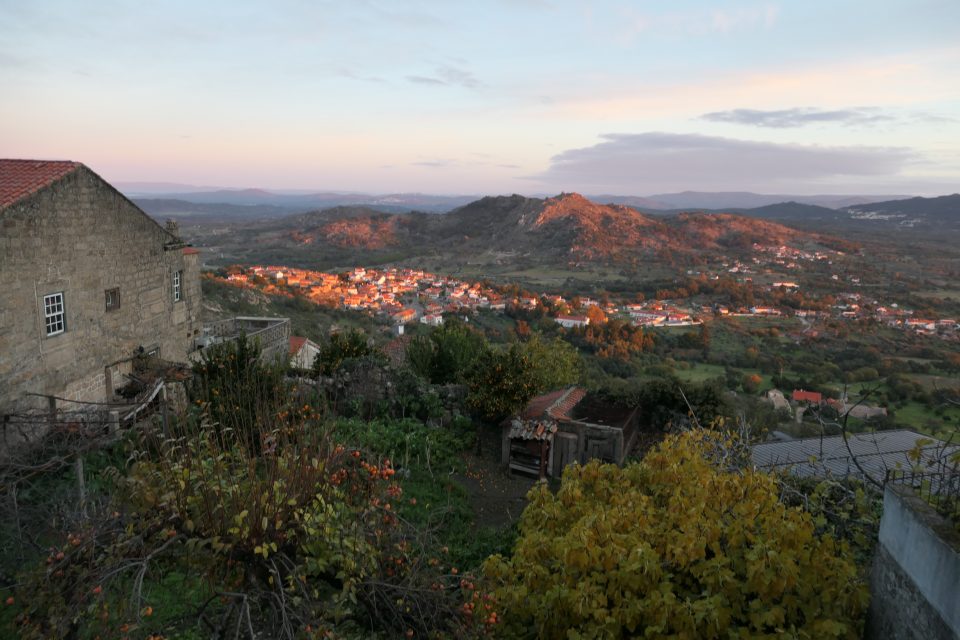
Morning light from our balcony 
Casa de David with the Jewish star logo
We started our drive to Idanha-a-Velha – the seventh historic village we would be visiting. As we passed through the small village of Medelim, we noticed a small café called Shalom. Once again, David went in to inquire. They did not speak English, but understood enough to answer “Rede de Judiarias” (Portuguese name for the Portuguese Network of Jewish Quarters). Medelim was a village in the network, and I assume they chose the name to attract those that follow the route. It worked – we stopped. However, we were hurrying and did not have the time to check out the Jewish artifacts here.
Idanha-a-Velha was not a small, old, charming village like Monsanto, but rather a large town. We parked in the historic center and made our way to the place where the castle once stood. The view over the valley below was stunning. Hurried for time, we walked just one block into the old historic district. Right away we saw a mark to indicate a New Christian home.
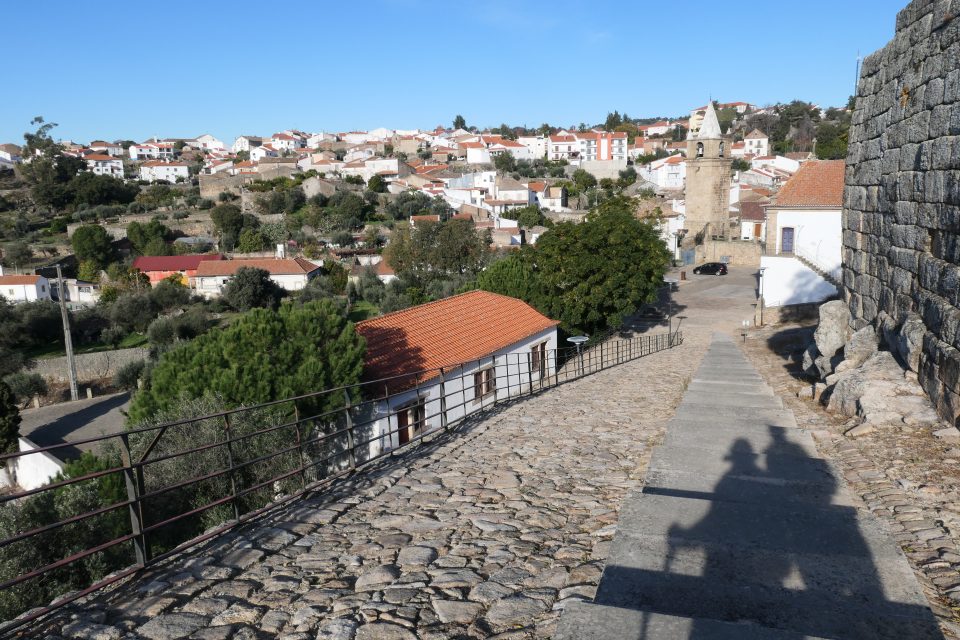
Stairs to the ruins of the castle in Idanha-a-Velha 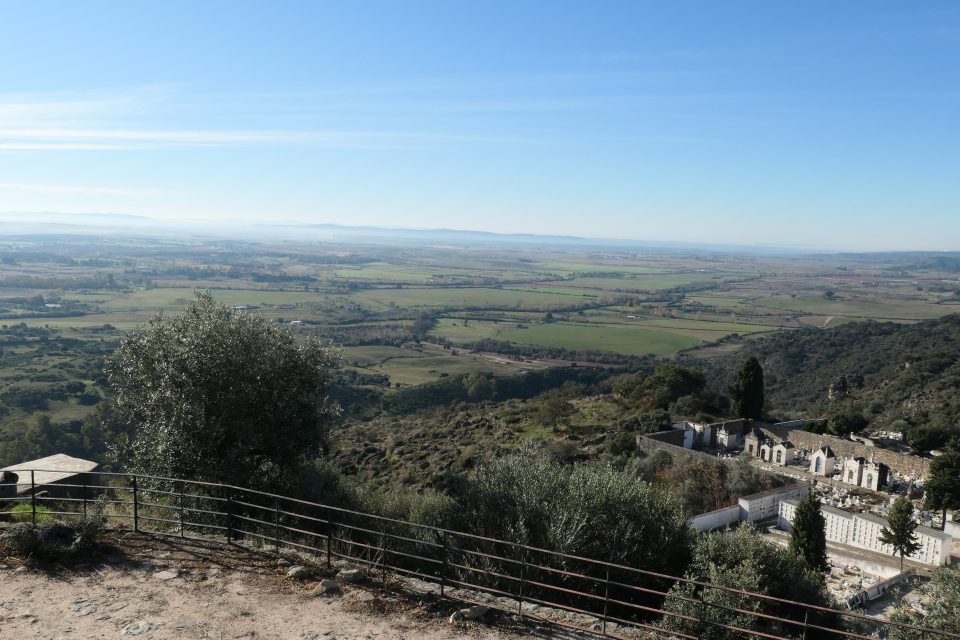
Looking out over the agricultural fields 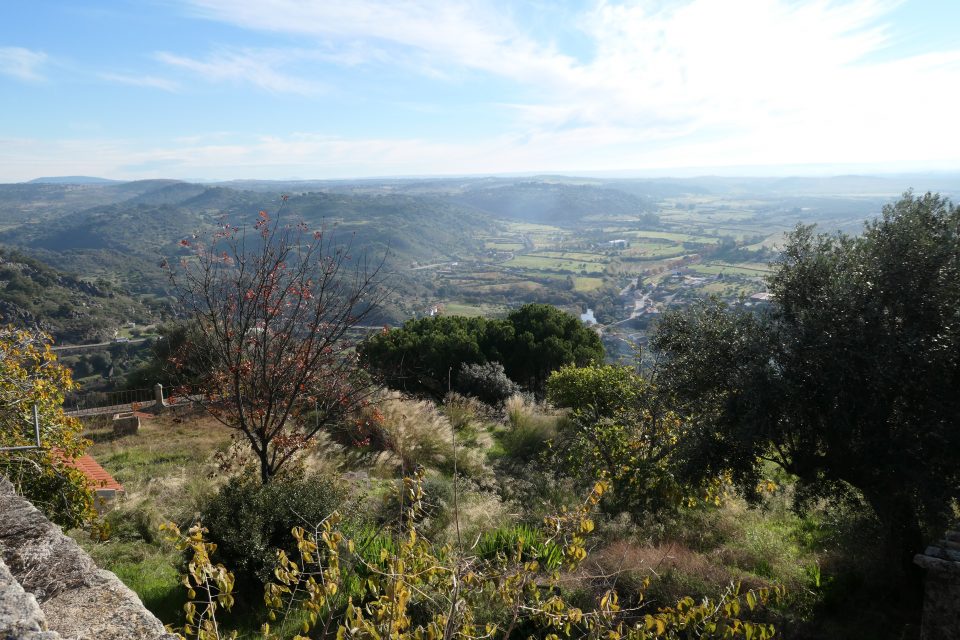
Other direction 
Panoramic view 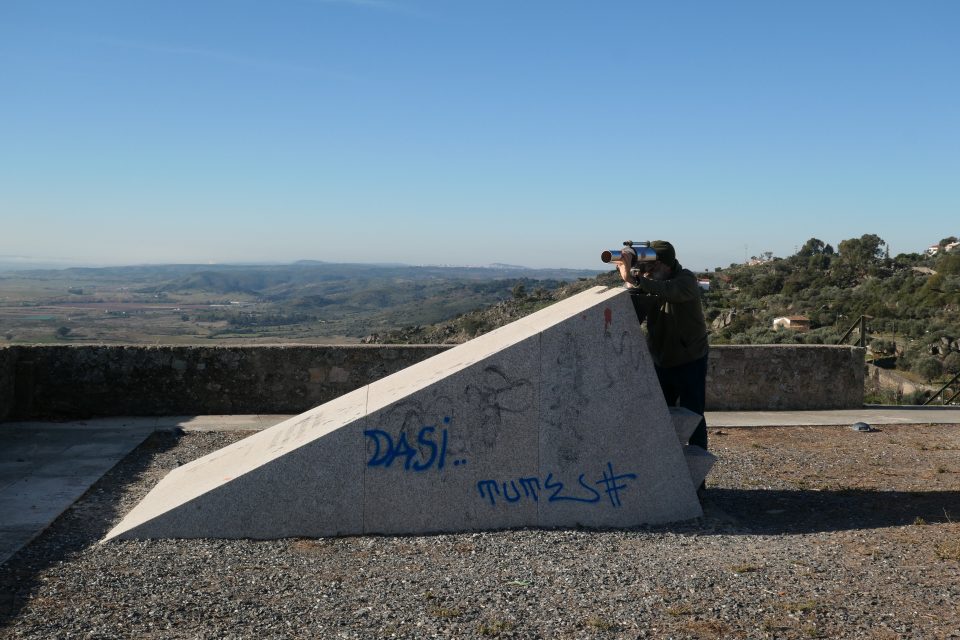
There was a working telescope on top that Mark enjoyed 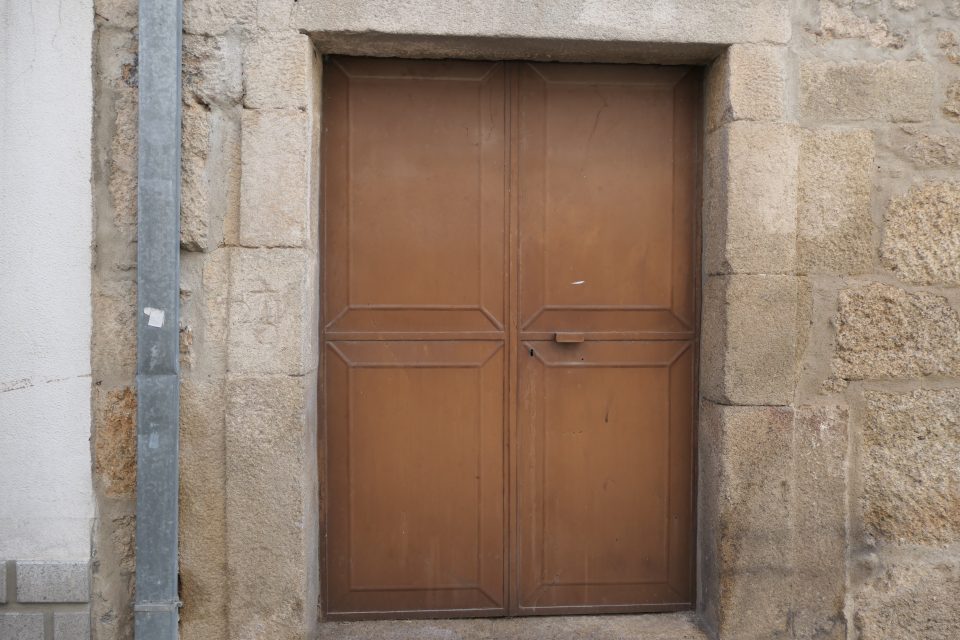
In the previous Jewish quarter of Idanha-a-Velha, a marking on the left side of the doorpost
We now had a ½ hour ride to the Castelo Branco bus station. We accompanied David to the station, shared some lukewarm chestnuts (often sold by vendor carts here) and said our goodbyes.
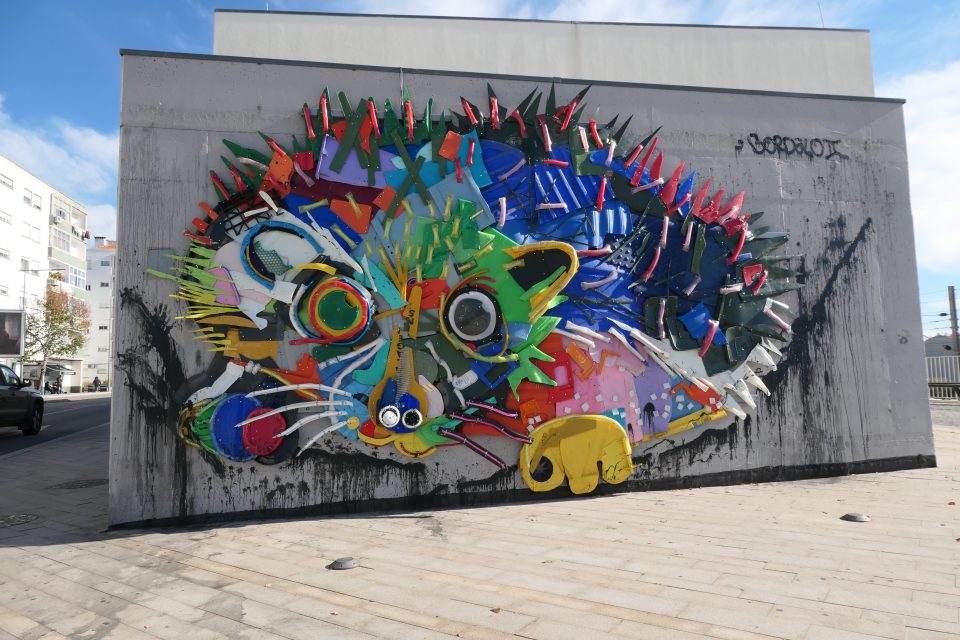
Art from recycled materials at the Castelo Branco central bus station
Mark and I then continued to the historic center of Castelo Branco. It is the largest city in the area, with a population of about 30,000. The city was a mix of contrasts. On one hand, the outskirts looked very nice. Many apartment buildings and some large private homes. In the city center, a main shopping street was beautifully tree-covered. There were many museums scattered throughout. The city was also dotted with many plazas, some with fountains, some with trees, some with grass. All nice things. On the other hand, of all the cities we have been to, the historic center here was in the worse shape. Many buildings need renovation, many are for sale, most are empty. Walking the narrow lanes, it feels neglected and abandoned.
Our first stop in Castelo Branco was a statue of Amato Lusitano, a Jewish physician to the pope and one of the physicians highlighted in the museum we visited yesterday. The statue is situated in a nice large plaza, but some of the letters of his names had disappeared. Two names were shown because the Jews at the time had two, the New Christian name they were baptized with, and also a Jewish name. Amato Lusitano was his Jewish name, João Rodrigues his New Christian name.
The tourist office was nearby, and from there we got a map showing the location of the two Jewish quarters in the city. We then walked up towards the castle to the The House of Jewish Presence Memorial Museum. This is a museum that deals mostly with the Jewish heritage of Castelo Branco. On the first floor are some displays about Judaism in general, such as showing a torah scroll, but most of the exhibit is about the Jewish history specifically of Castelo Branco.
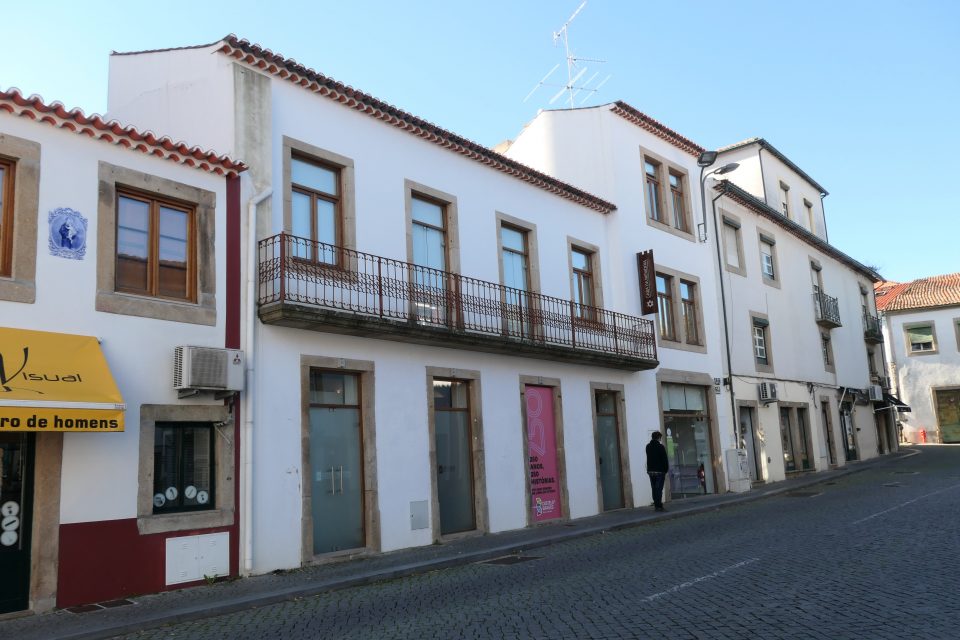
The House of Jewish Presence Memorial Museum 
Inside the museum 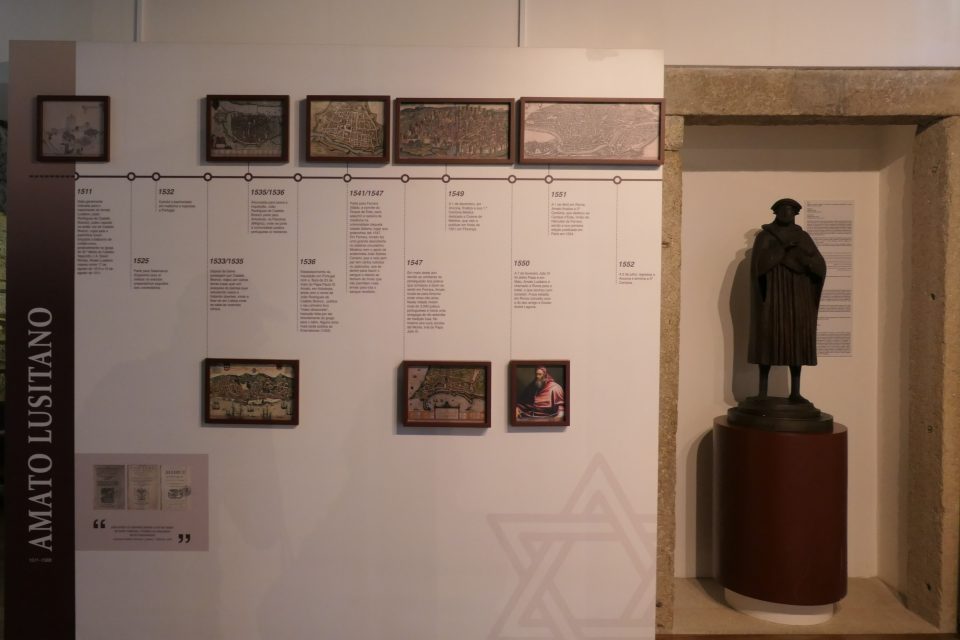
Timeline and statue of Amato Lusitano 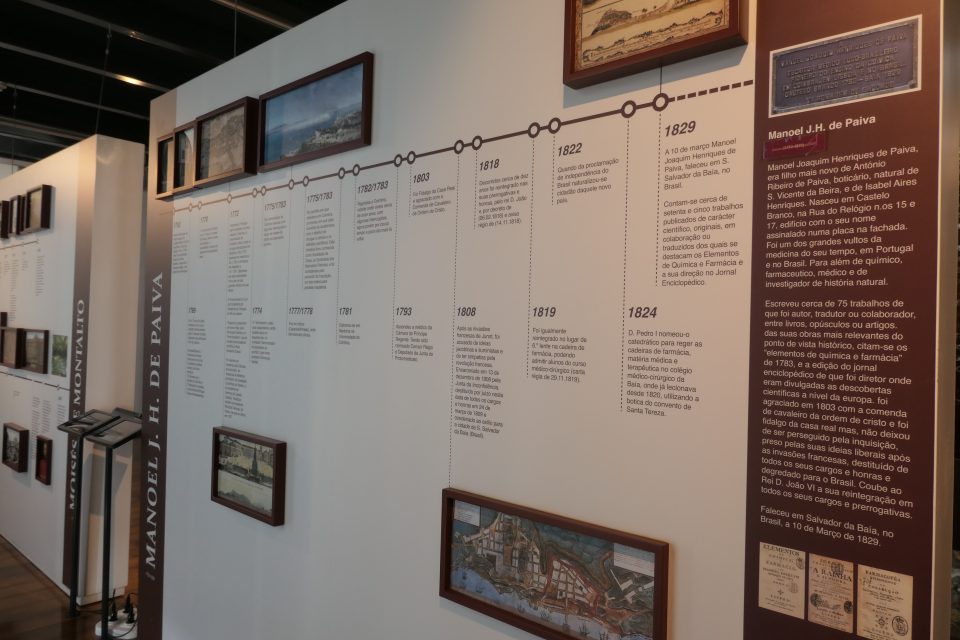
Timelines of the lives of several distinguished Jews born in Castelo Branco 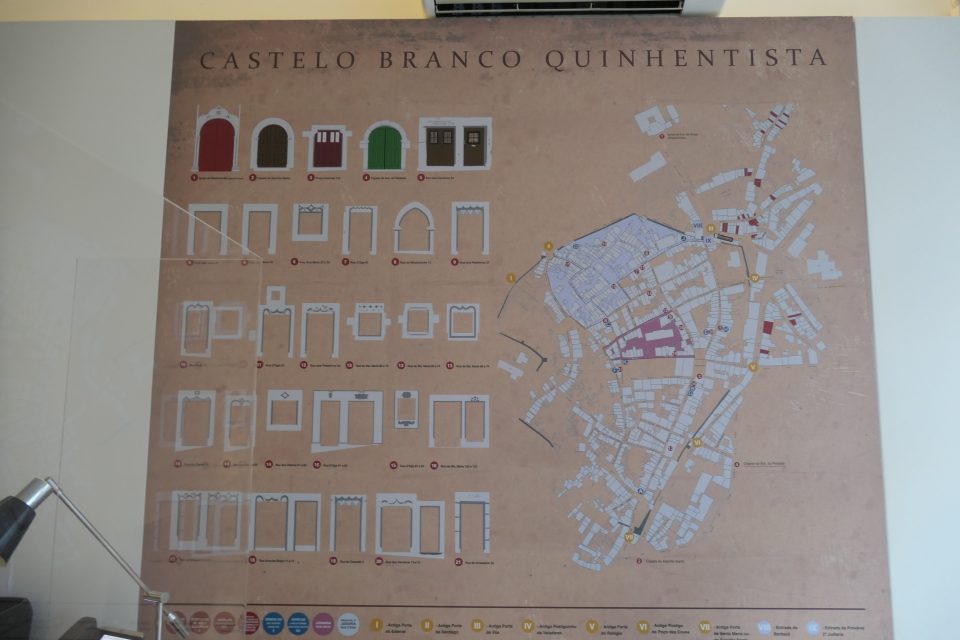
Map of Castelo Branco historical center showing the two Jewish quarters and marking of a Jewish presence. We noticed that many of the markings are outside the Jewish quarter. This is because after the forced conversion, the New Christians moved throughout the city.
On the second floor, they show the life of five distinguished Jewish people from the town. The first panel was about Amato Lusitano, the same physician whose statue we had just visited. Another two, were also distinguished physicians. There was one woman in the group – she had the dubious distinction of being the oldest person tried and convicted in the inquisition. She was 117 when she was burnt for practicing Judaism. All the information in the museum was only in Portuguese, but they offered free audio guides in both English and Hebrew, among other languages.
On thing that was notable in the museum, is that they had interactive display with a database of all the victims of the inquisition from the area. The inquisition kept very good records, and here they digitized the information. You could click on a name, and get information like the name of the victim’s parents, his birthdate, his address, his occupation, etc. As you leafed through the records you saw the story of different people’s lives from hundreds of years ago. Impressive.

Interactive display listing the name of the Jewish victims of the inquisition from the Castelo Branco 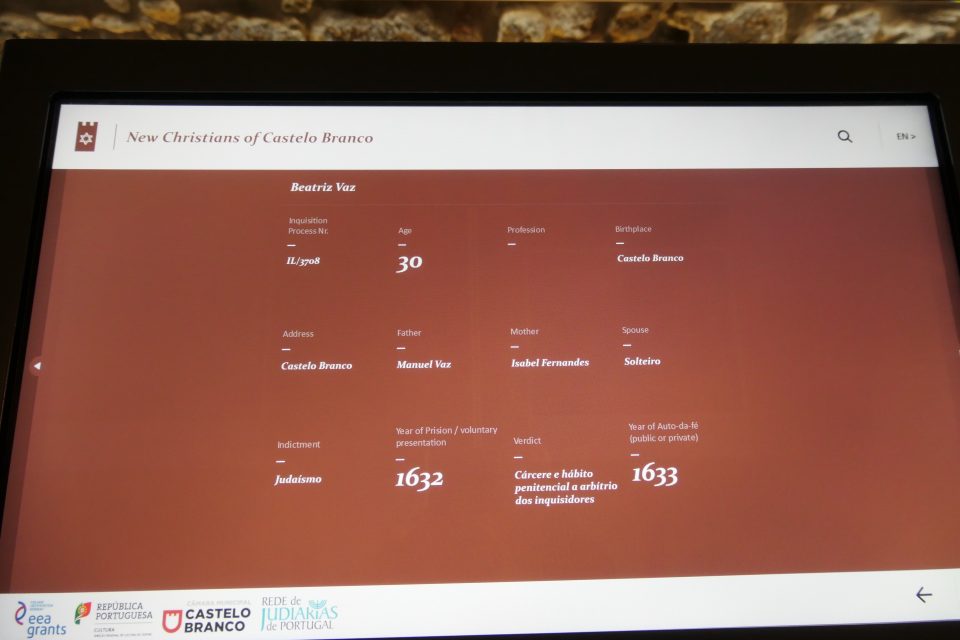
Detailed information on each one. This was a single 30-year old man accused of Judaism and burnt at the stake in 1633.
At the entrance to the museum, there was a very good detailed map showing where markings on houses can be found and pointing out the location of the old Jewish quarter as well as the newer one. This did not correspond with what the tourist office has told us. We trusted the map in the museum more and proceeded to look for the streets associated with the Jewish quarters. Wandering in and out of the narrow lanes of the old city, we were disappointed to see how neglected it was. Such a huge wasted potential to be nice.
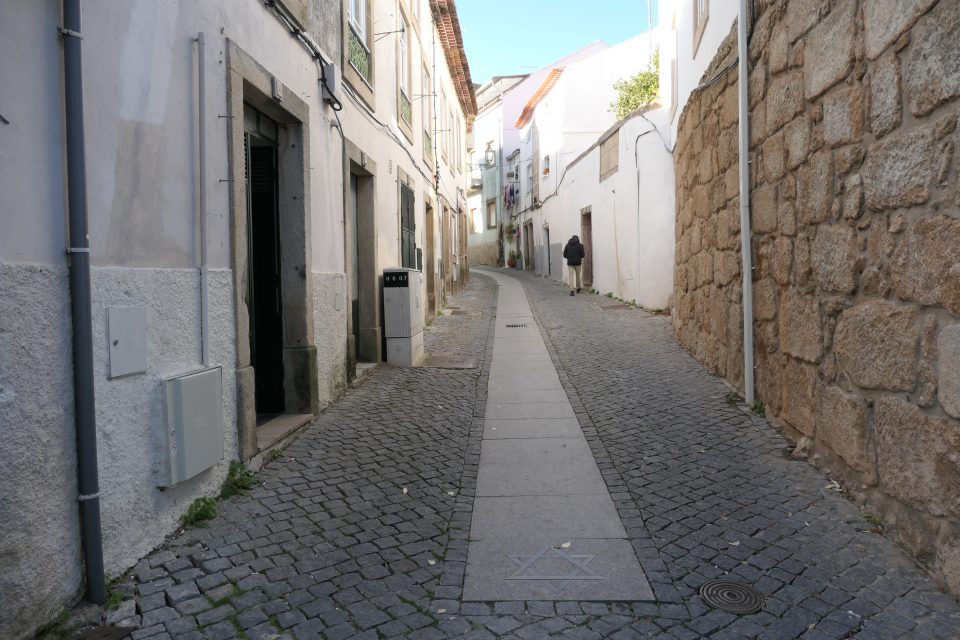
One of the former streets of the old Jewish quarter 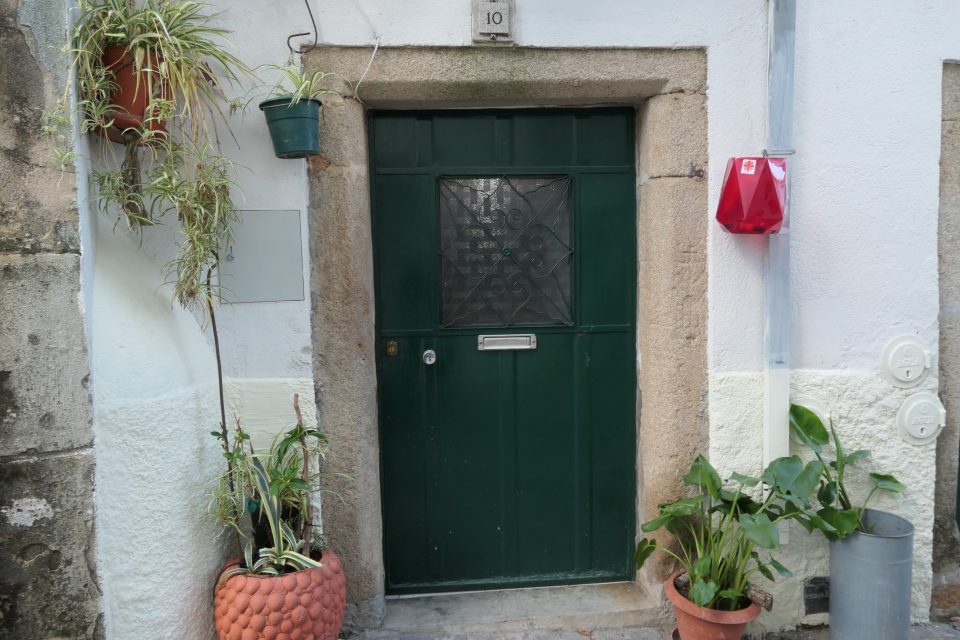
Markings on the right side of the doorpost 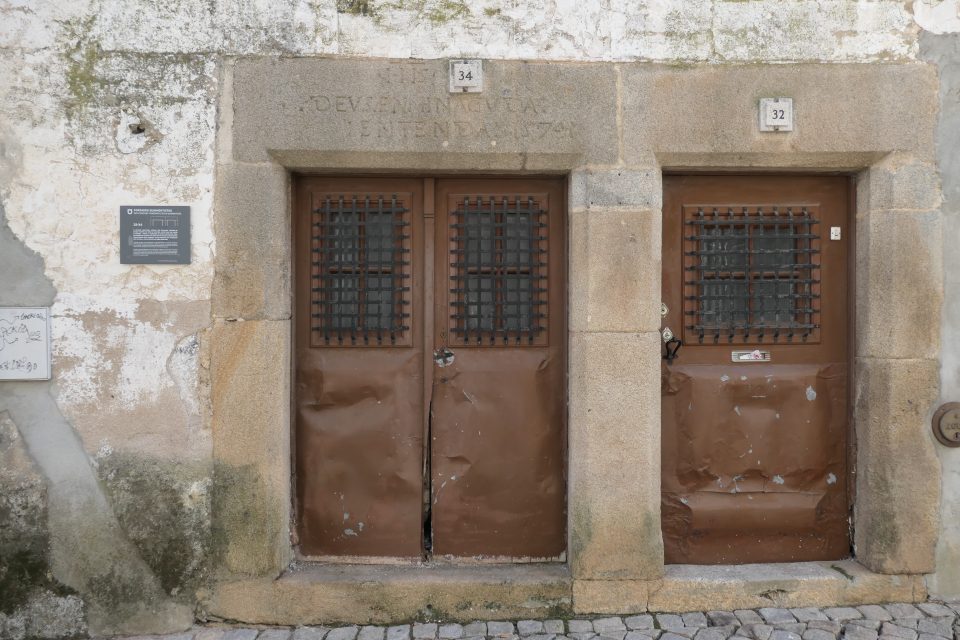
A door with an inscription “JHS May God help and understand us – 1574”. JHS stands for Jesus Hominum Salvator in Latin (Jesus Savior of Mankind). Could this be a New Christian? 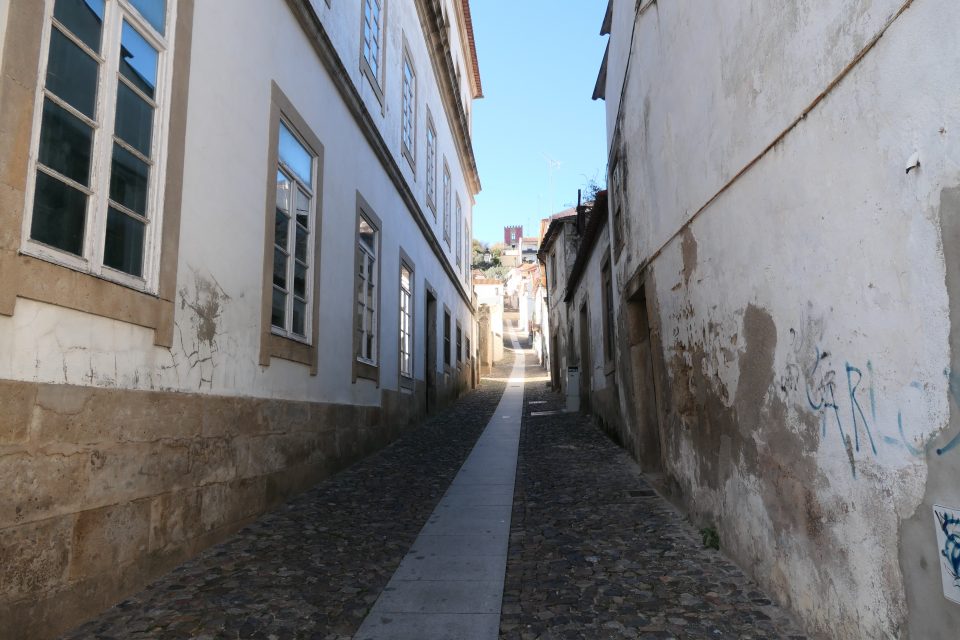
The streets of the Jewish quarter once again right below the castle at the top of the hill 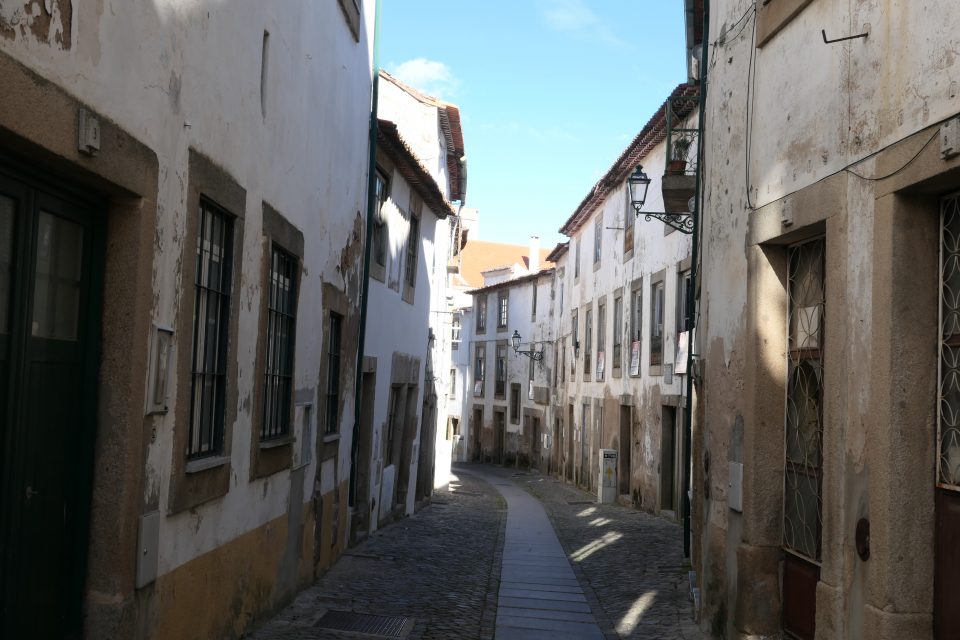
Many abandoned houses, many houses for sale
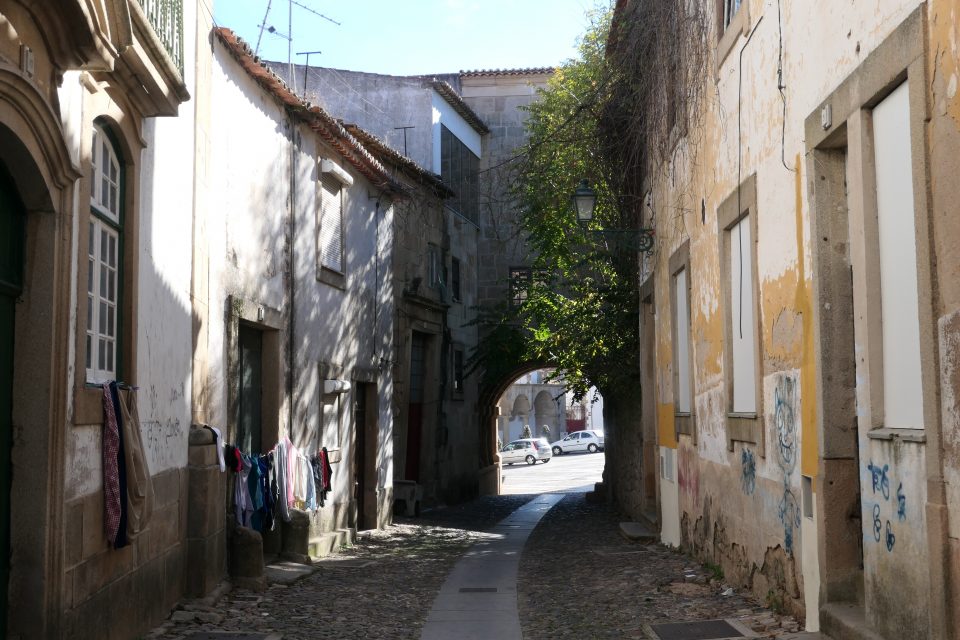
A city gate 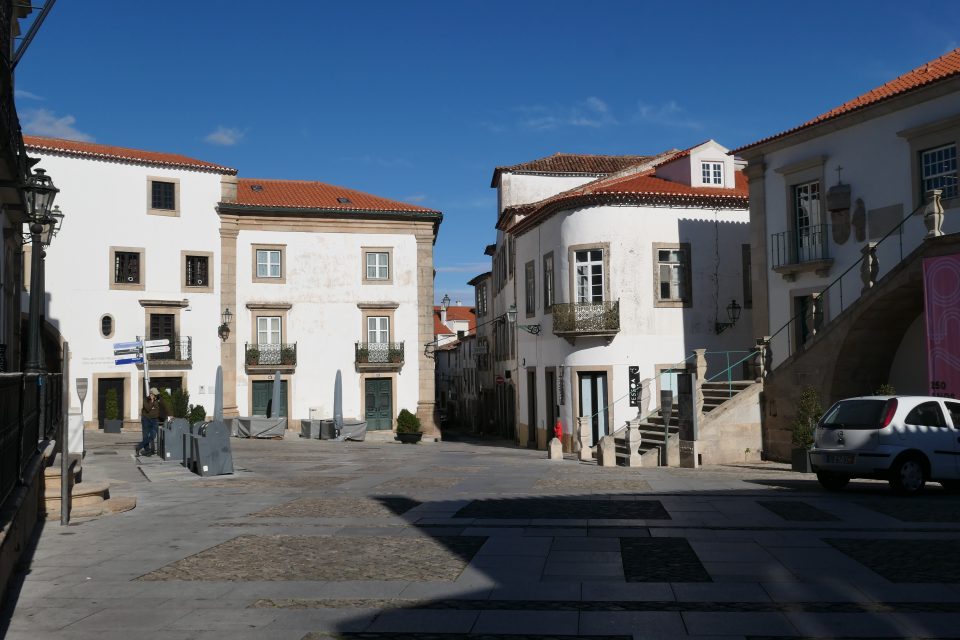
One of the many nice plazas among the streets of dilapidated houses
Being a big city, we had a choice of four different vegan/vegetarian restaurants for lunch. We choose Namaste, an Indian restaurant. Just like the rest of the city, the restaurant somewhat disappointing. It was not the Indian food I had expected – maybe a thali, some naan bread, dosa, samosas – all the Indian things I love. Instead, you got the soup, main dish and dessert of the day. Everyone gets the same. The main dish was rice, salad (first lettuce salad ever eaten in a Indian restaurant), a tofu scrambled egg, peas with pieces of seitan and a cabbage dish. The food was tasty, just not the Indian food I had wanted.
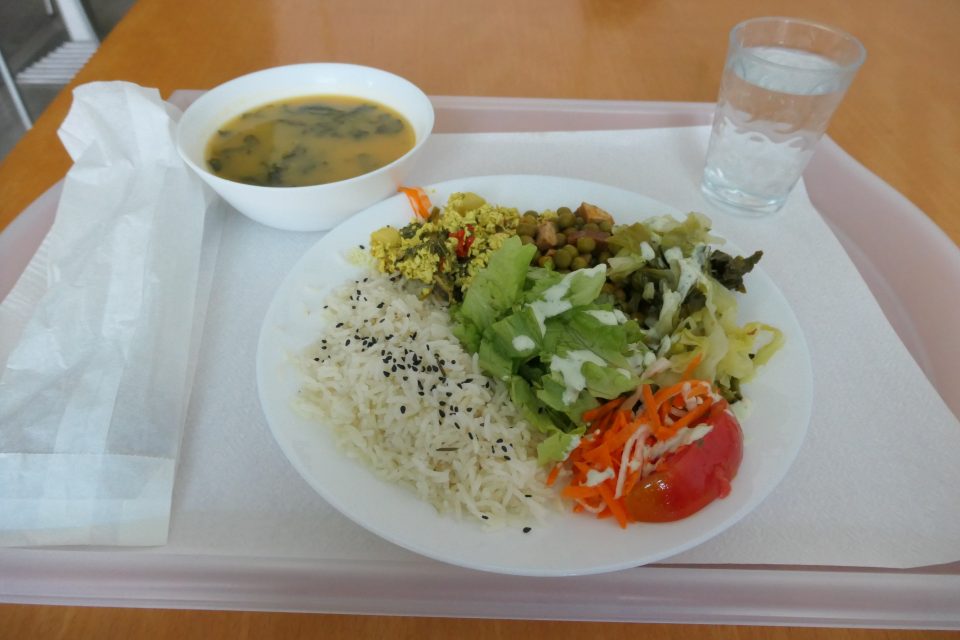
Indian meal?
On our way back to the car we stumbled on another nice plaza. To our surprise, we found here a second statue of Amato Lusitano. Mark added this to our Wandering Jew app and we continued on our way.
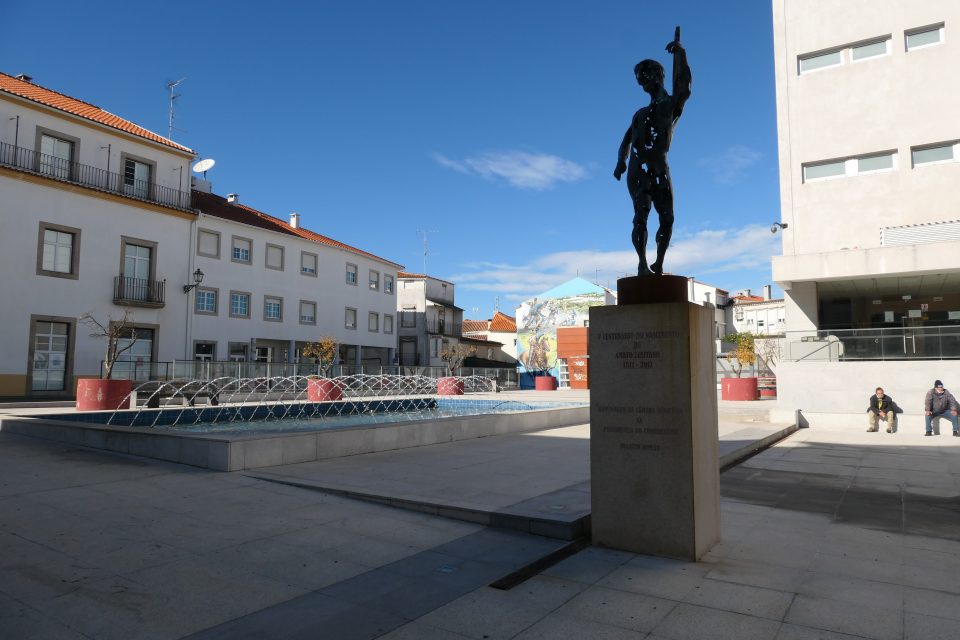
A tribute to Jewish physician Amato Lusitano from 2011, 500 years since he was born in Castelo Branco
Before continuing, we checked back with the house in Belmonte. We had not yet received PayPal information, and this would be our last chance to return to Belmonte. We were now only 45 minutes south of Belmonte, and our next destination was an additional hour even further south. The hostess replied that we should not return, she is still working on setting up the PayPal.
From Castelo Branco, we were driving to our final destination, Castelo de Vide. Google maps suggested the toll highway, but the alternate route was only 5 minutes slower. We went for the alternate way, and it was a spectacular drive down narrow winding roads. At the end, it took us twice as long because of camera stops. The road went through hilly forests, at one point it crossed the Tagus river (the same river that makes it way to Lisbon), and towards the end, went alongside a reservoir. The weather was sunny, the views were gorgeous – what a delight!
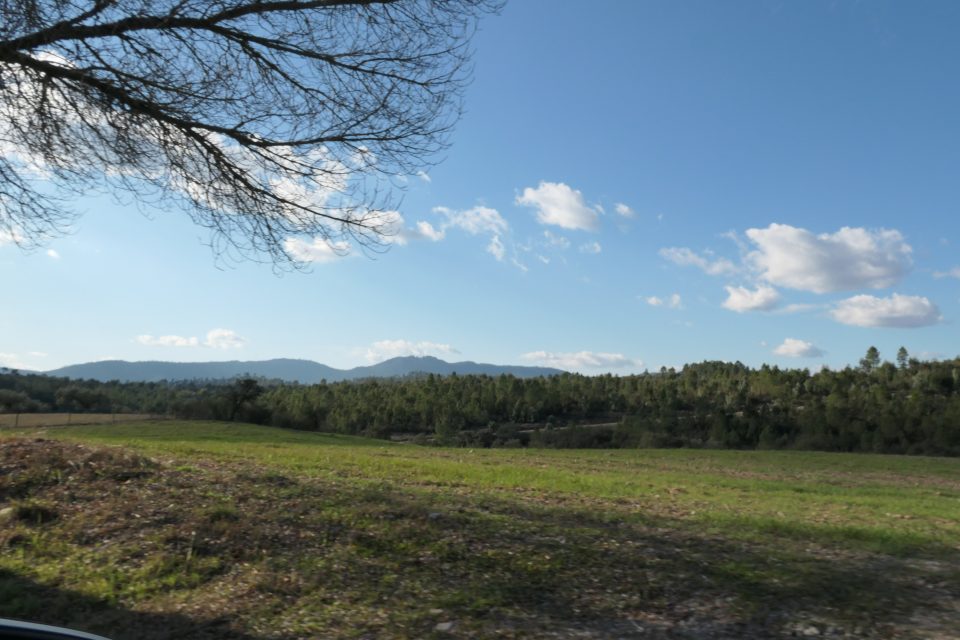
From Castelo Branco to Castelo de Vide 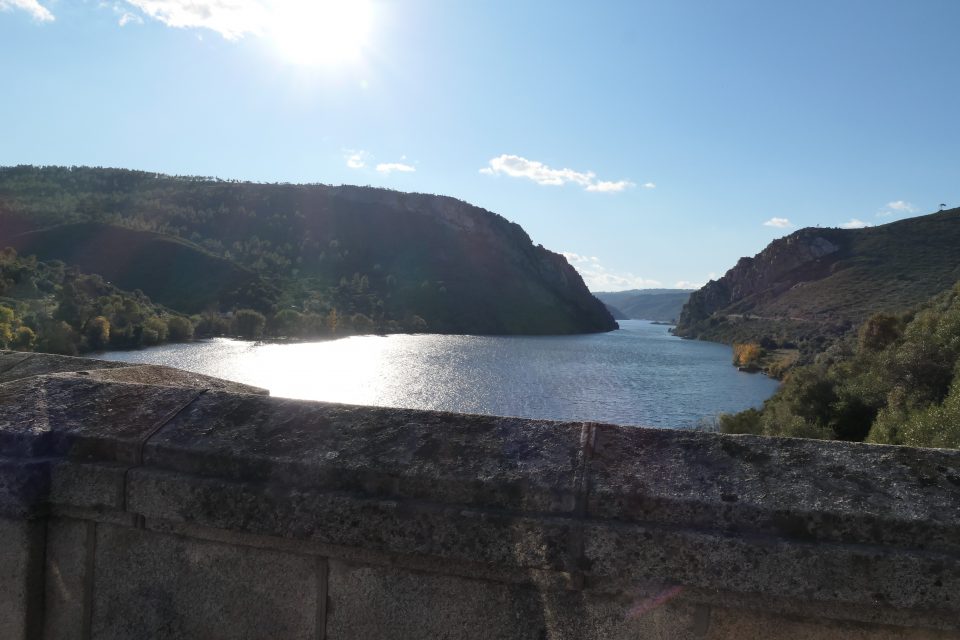
Crossing the river Tagus 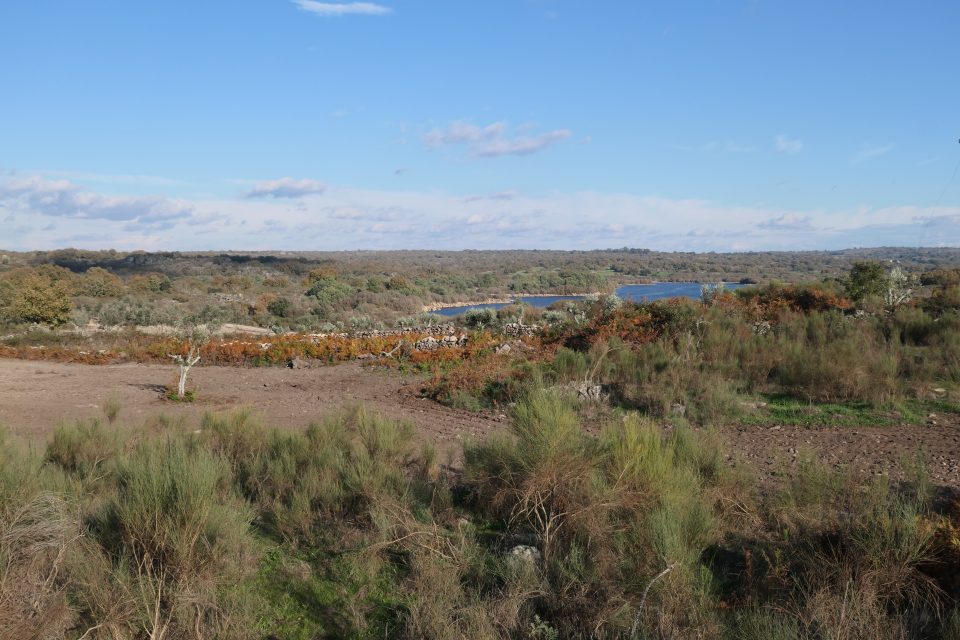
Beautiful scenery 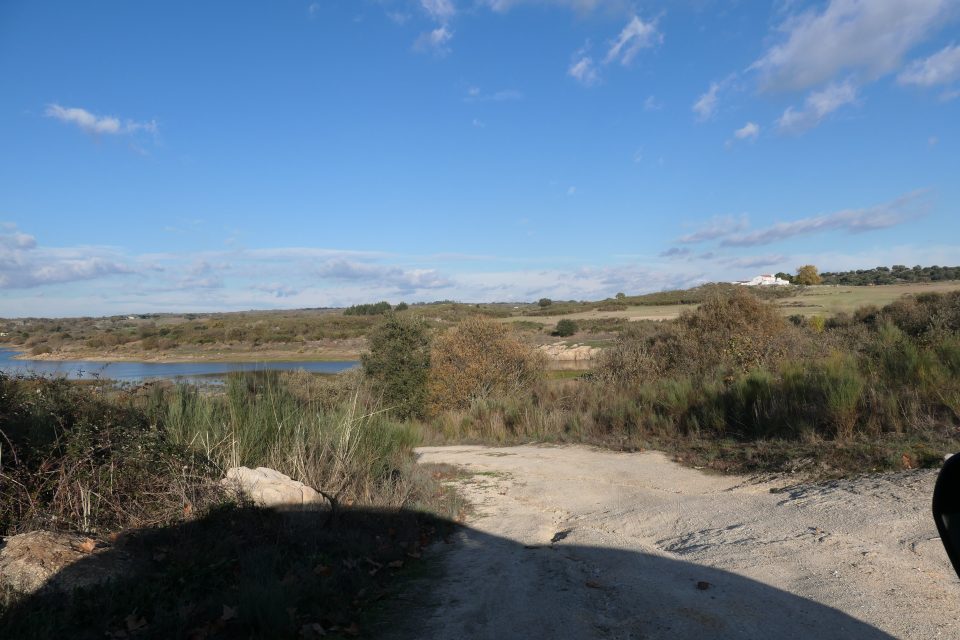
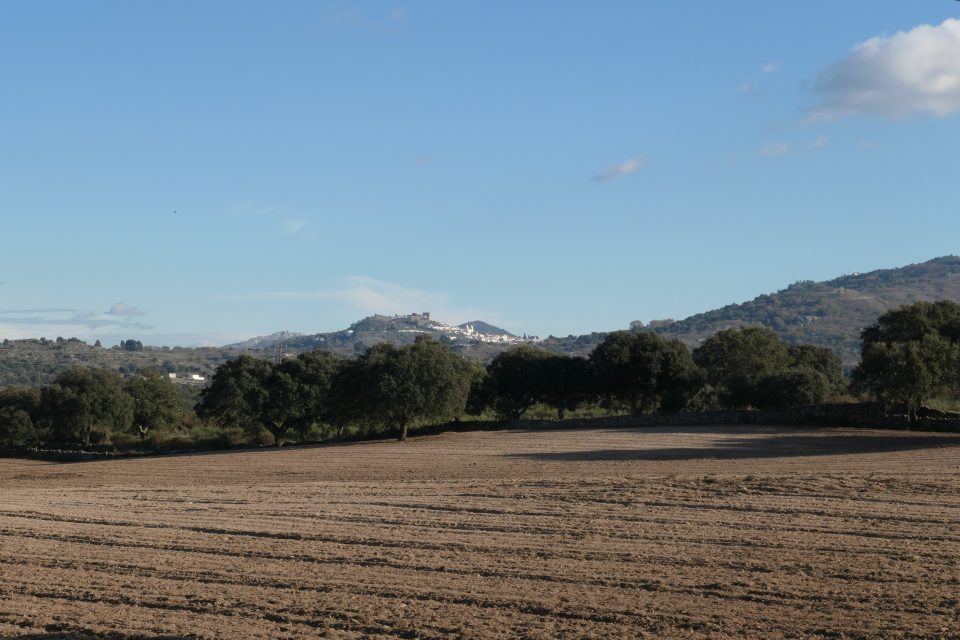
Castelo de Vide in the distance
We saw Castelo de Vide from far away perched up on the side of a hill. There was a large castle at one end, and all the houses were white and glistening in the sun. As we approached, the views of the city became even more spectacular. This was definitely one of the most stunning villages we have come to yet. Walking through the city, most of the houses are renovated – all in white, and some with yellow trim. There seems to be lots of construction repairs taking place on those houses not yet redone. Most everything was lived in and taken care of – so opposite of Castelo Branco we had just come from.
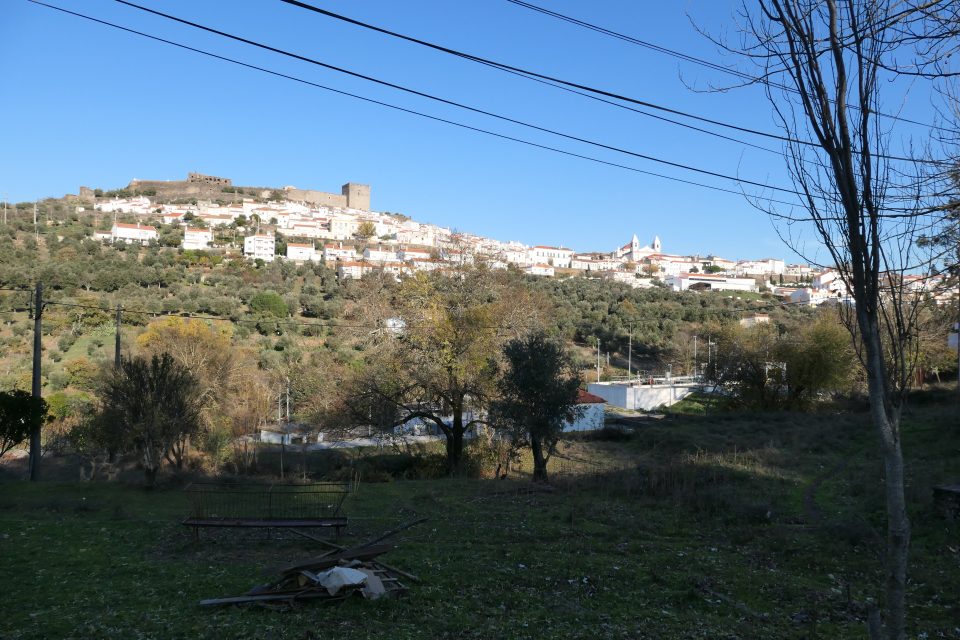
Castelo de Vide 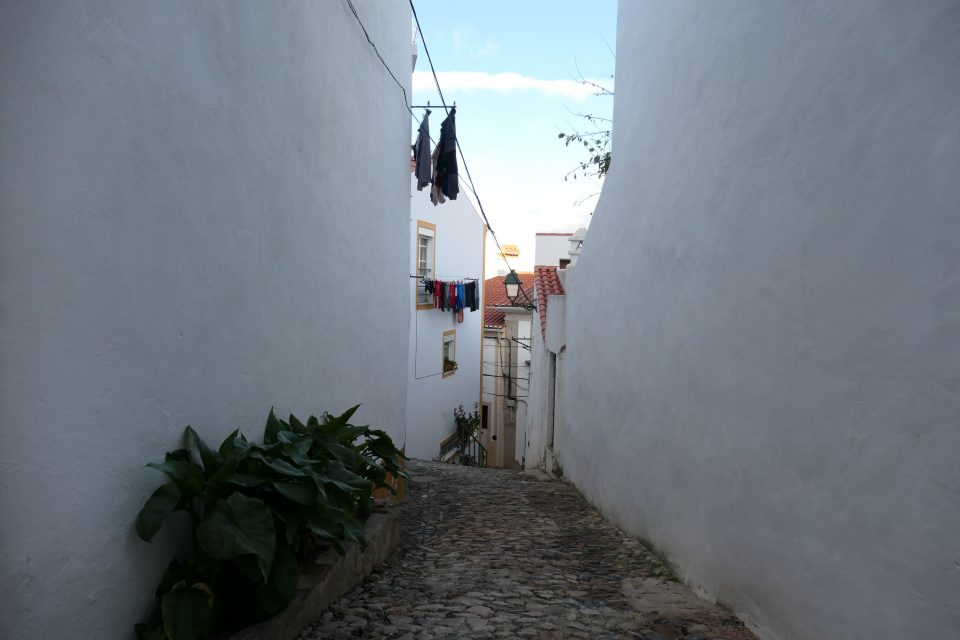
Steep, white narrow lanes of Castelo de Vide 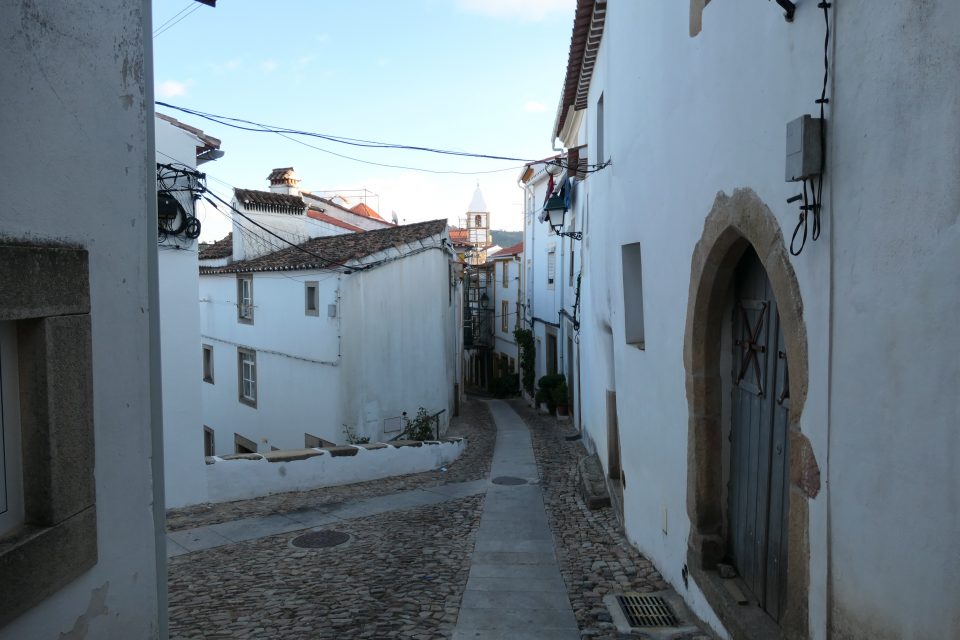
Our first destination was the Sinagoga. This is a museum, located in the Jewish quarter, housed in what they thought was perhaps once the synagogue. Once again, everything was only in Portuguese, this time without any translation. The building had many small rooms, one of which was obviously the synagogue – it had an ark. One room was dedicated to Garcia de Orta, the physician we first saw his statue at the The Portuguese Institute of Hygiene and Tropical Medicine in Lisbon, since he was born in Castelo de Vide. Another seemed be about different communities the Jews from here had dispersed to. One room had a display of cow bells hanging from the ceiling – no idea what that represented.
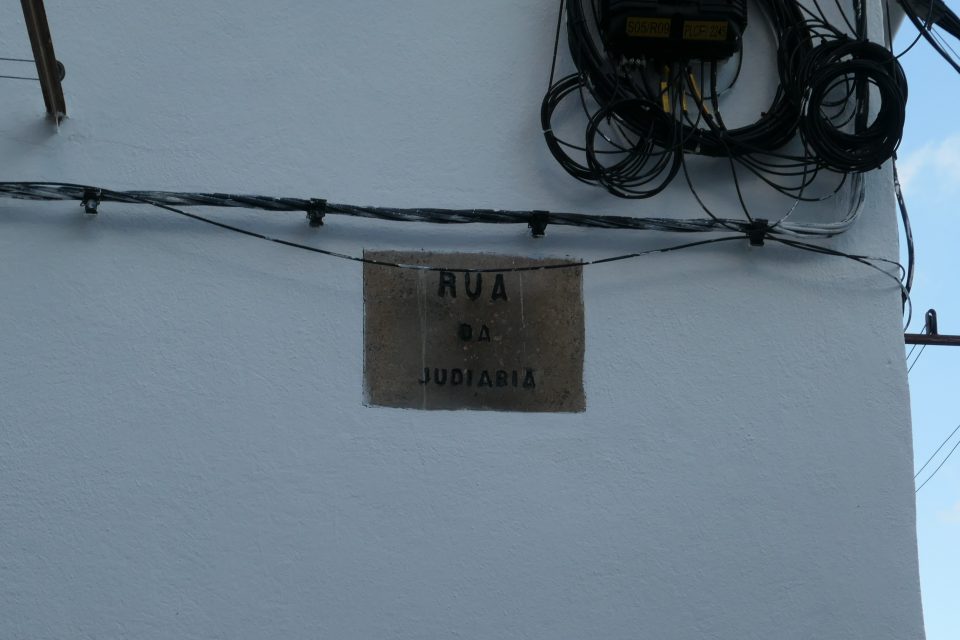
Rua da Judiaria 
Former street of the Jews 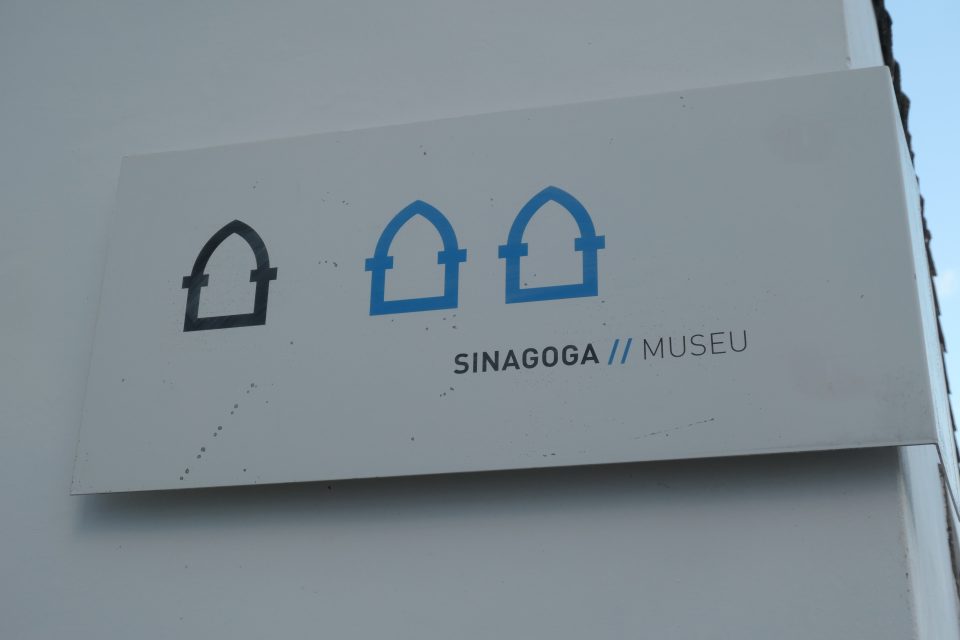
The Sinagoga Museum 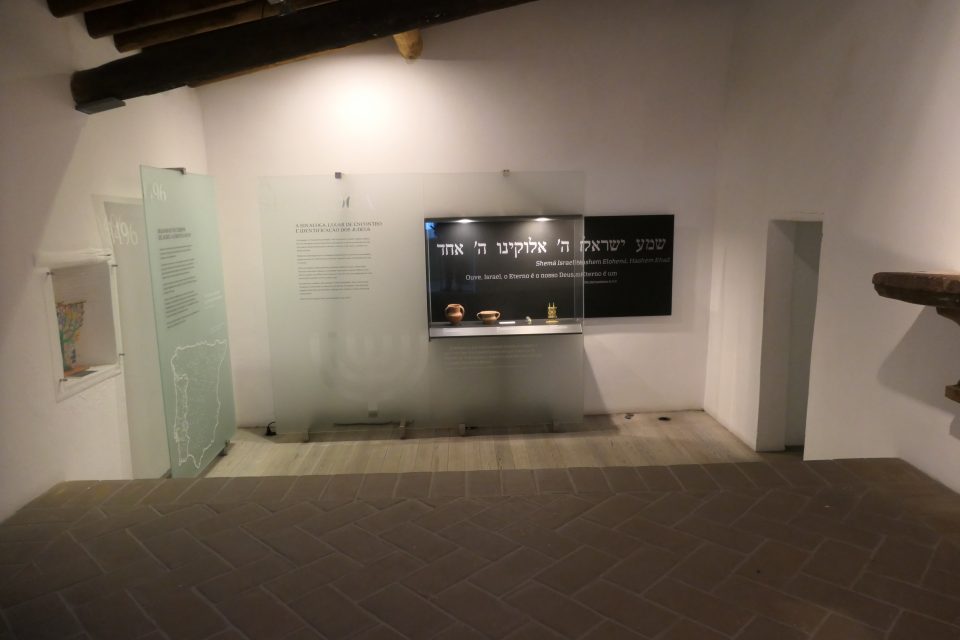
Inside the museum 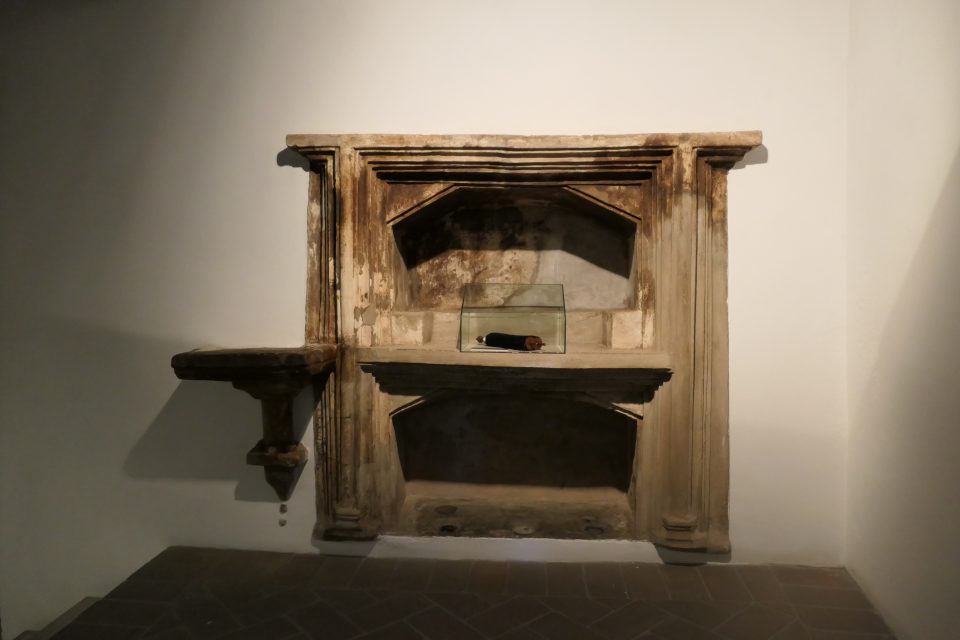
The ark
From the museum, we walked down a very steep street to the Fonte da Vila. This is a beautiful fountain at the edge of the Jewish quarter, thought to be where the Jews where baptized when converted to New Christians. We returned to our car and drove to the other end of the village to meet our host for our Airbnb. Although tiny, the apartment has everything we need, and being small and cozy, the heating system worked well (unlike last night when we were in a huge, amazing house in Monsanto that unless you sat next to the wood burning fireplace, you were cold).
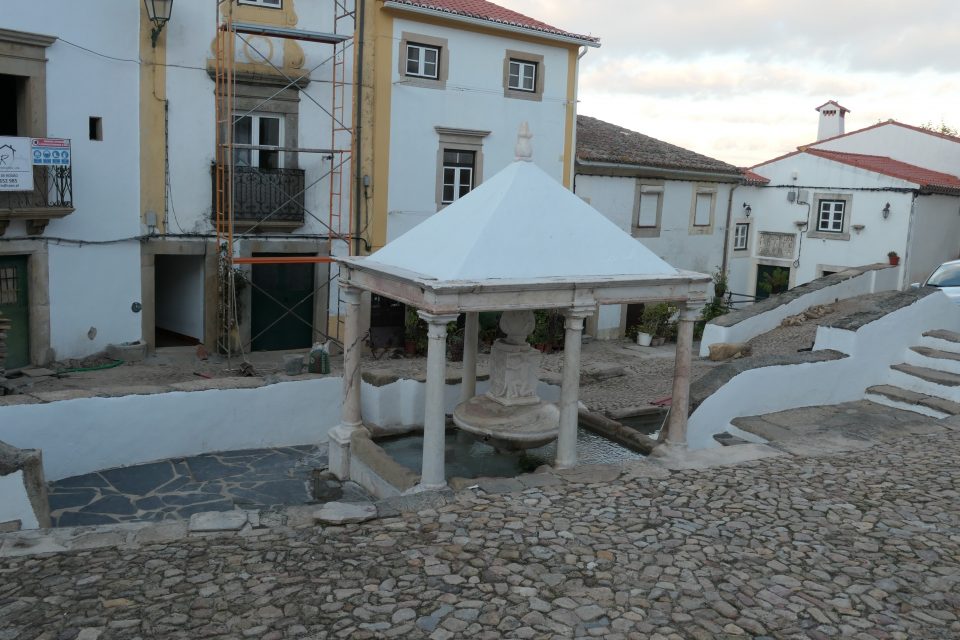
Fonte da Vila
We then drove the way we came into the village, to try to take some more photos. The trees and bushes made it impossible to get a really good shot. We walked around looking for unobstructed views and did not really find anything that does justice to the magnificence of the place.
We returned to our apartment, had dinner, warm showers (thank goodness) and computer time. While having dinner we thankfully received the PayPal information to make the payment for the house in Belmonte. We quickly paid, apologized again and were happy that this was taken care of.
Today we had been in two Castelos – Castelo Branco and Castelo de Vide. Aside from having the same word in their name, they could not have been more different. More to explore tomorrow. Good night.

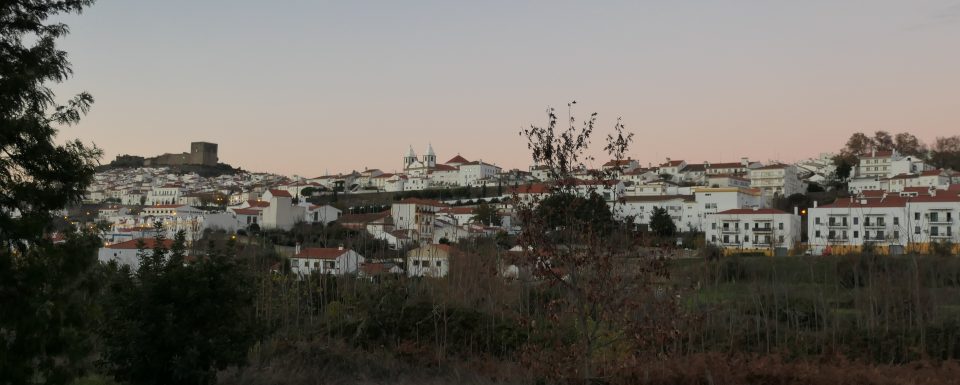
Castelo-de-Vide was really beautiful!
I just want to say that it was so much fun to travel with irit and mark. It was amazingly planned, we stayed in wonderful, often historical places, saw a lot and I loved all the small towns and villages. That was very special! As a traveler who wanders, explores, meanders and gets lost, I have never been more on time in my life. Irit would say,” we have seven more minutes at this museum and now off to our next destination.” 😀 By the way, since there were abbeys in these two towns I was sure that Irit would have entitled this blog entry “Abbots and Castelos”. 😂